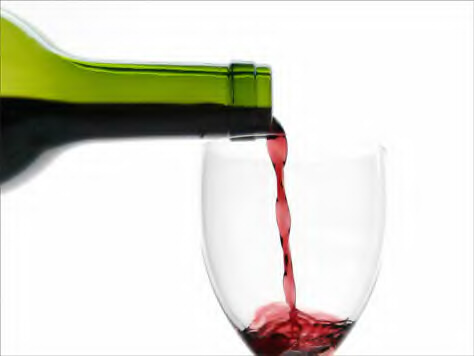Red Wine’s Many Health Benefits

Red Wine’s Many Health Benefits
A glass of red wine each day may be providing you with more than just a little relaxation. For over 10 years, research has indicated that moderate intake of alcohol improves cardiovascular health. In fact, in 1992 Harvard researchers included moderate alcohol consumption as one of the “eight proven ways to reduce coronary heart disease risk.” However, research has suggested that specifically red wine is the most beneficial to your heart health. The cardioprotective effect has been attributed to antioxidants present in the skin and seeds of red grapes.
Scientists believe the antioxidants, called flavonoids, reduce the risk of coronary heart disease in three ways:
Scientists believe the antioxidants, called flavonoids, reduce the risk of coronary heart disease in three ways:
- by reducing production of low density lipoprotein (LDL) cholesterol (also know as the “bad” cholesterol)
- by boosting high density lipoprotein (HDL) cholesterol (the good cholesterol)
- by reducing blood clotting. Furthermore, consuming a glass of wine along with a meal may favorably influence your lipid profiles following that meal
Recently, researchers have found that moderate red wine consumption may be beneficial to more than just your heart. New research published in the August 2009 print issue of The FASEB Journal, not only explains resveratrol’s one-two punch on inflammation, but also show how it—or a derivative—can be used to treat potentially deadly inflammatory disease, such as appendicitis, peritonitis, and systemic sepsis. An older study had discovered that the antioxidant resveratrol may inhibit tumor development in some cancers. And still another reason to toast nature’s powerful antioxidant, resveratrol has been shown to aid in the formation of nerve cells, which experts believe may be helpful in the treatment of neurological diseases like Alzheimer’s and Parkinson’s.
Researchers at the University of California, at Davis tested a variety of wines to determine which types have the highest concentrations of flavonoids. Their results concluded that the flavonoid favorite is Cabernet Sauvignon, followed closely by Petit Syrah and Pinot Noir. Both Merlots and red zinfandels have fewer flavonoids than their more potent predecessors. White wine had significantly smaller amounts than the red wine varieties. The bottom line is the sweeter the wine, the fewer the flavonoids. Dryer red wines are your best bet for a flavonoid boost.
A four-ounce glass of wine is equivalent to one serving. Men will benefit from consuming one to two servings per day. Women should consume only one serving per day to reap the maximum benefits. This is not to say that you should start drinking alcohol if you presently do not. Occasional or binge drinkers have higher mortality rates than those who drink moderately on a regular basis. In those who consume three or more drinks per day, there is an increased risk for elevated serum triglycerides (fat in the bloodstream). Long-term, excessive alcohol consumption can damage nerve cells, the liver and the pancreas. Heavy drinkers are also at risk for malnutrition, as alcohol may substitute for more nutritious foods.
A four-ounce glass of wine is equivalent to one serving. Men will benefit from consuming one to two servings per day. Women should consume only one serving per day to reap the maximum benefits. This is not to say that you should start drinking alcohol if you presently do not. Occasional or binge drinkers have higher mortality rates than those who drink moderately on a regular basis. In those who consume three or more drinks per day, there is an increased risk for elevated serum triglycerides (fat in the bloodstream). Long-term, excessive alcohol consumption can damage nerve cells, the liver and the pancreas. Heavy drinkers are also at risk for malnutrition, as alcohol may substitute for more nutritious foods.

0 comments:
Post a Comment